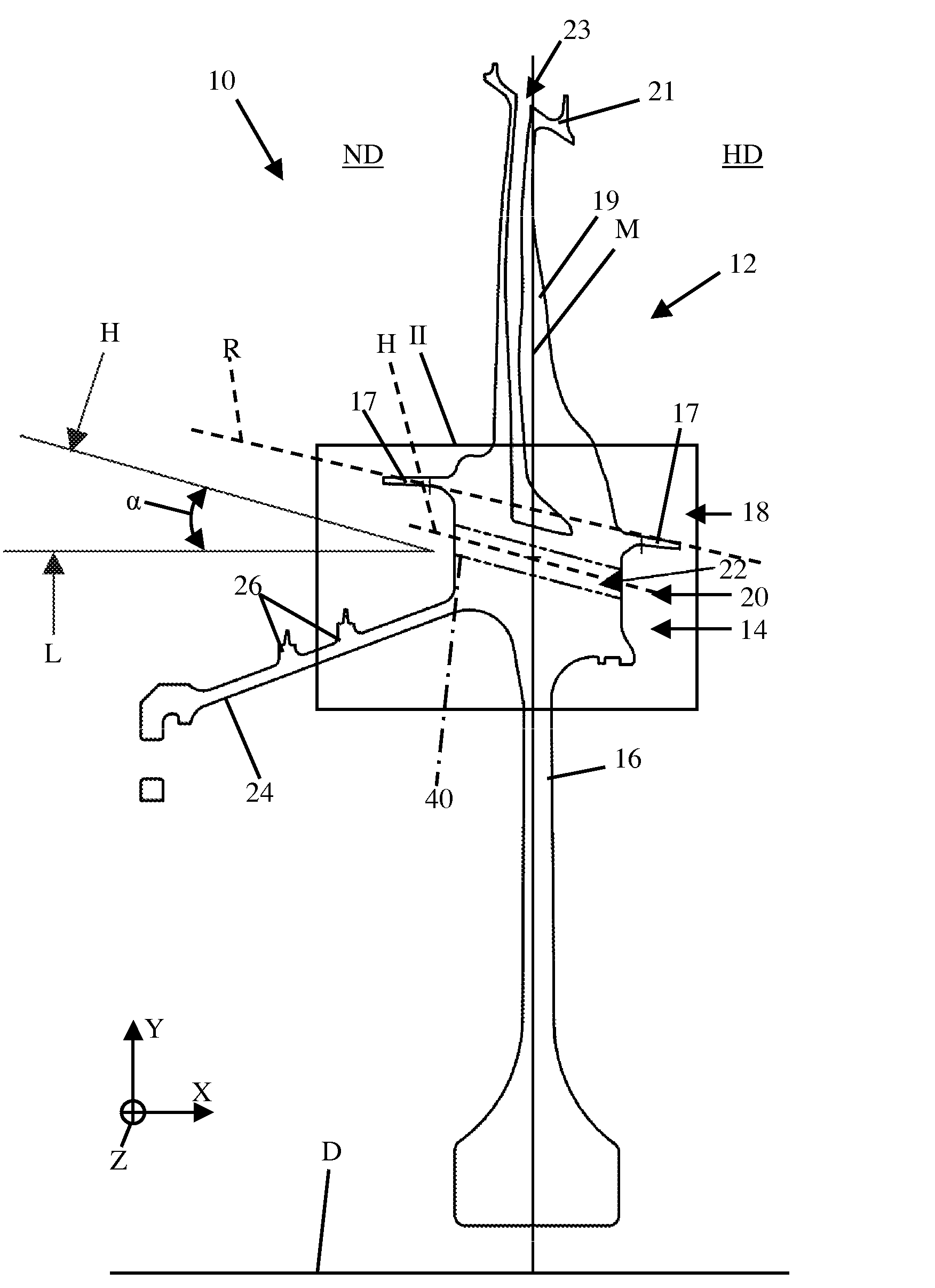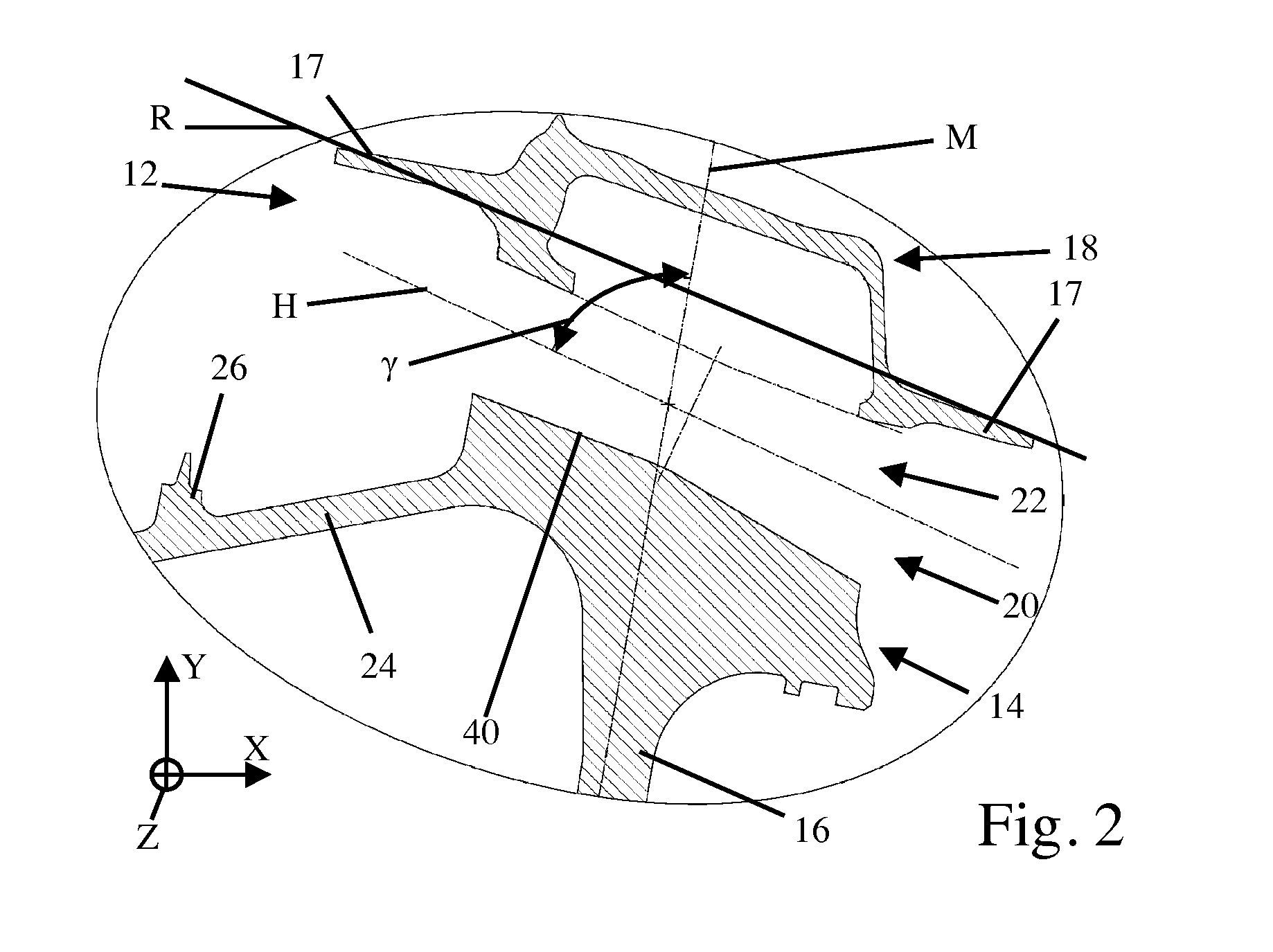Rotor for a turbo machine
a technology for turbo machines and rotors, which is applied in the direction of climate sustainability, leakage prevention, air transportation, etc., can solve the problems of reducing the service life of the rotor, reducing requiring a relatively large radial structural space, so as to improve the rigidity of the rotor, improve the service life, and improve the service life.
- Summary
- Abstract
- Description
- Claims
- Application Information
AI Technical Summary
Benefits of technology
Problems solved by technology
Method used
Image
Examples
Embodiment Construction
[0026]FIG. 1 shows a schematic lateral sectional view of a rotor 10 according to the invention for an aircraft turbine (not illustrated) and will be explained together with FIG. 2 in the following, and FIG. 2 shows an enlarged representation of the detail II shown in FIG. 1. A rotor 10, which is formed presently as a so-called BLISK, comprises several rotating blades 12. Each rotating blade 12 is joined cohesively to a basic rotor body 16 via its blade foot 14. Between a blade platform 18 and the blade foot 14, rotating blade 12 has a channel 22 extending between the high-pressure side HD and the low-pressure side ND of rotor 10 in the region of its blade neck 20. The underside of channel 22 in this case defines the radially outer edge 40 of the solid, uninterrupted rotor disk 16, in which this edge 40 is also designated a “life rim”. In the present example of embodiment, rotor 10 has one channel 22 per rotating blade 12. Basically, however, more or fewer channels 22 than rotating b...
PUM
| Property | Measurement | Unit |
|---|---|---|
| Angle | aaaaa | aaaaa |
| Angle | aaaaa | aaaaa |
| Angle | aaaaa | aaaaa |
Abstract
Description
Claims
Application Information
 Login to View More
Login to View More - R&D
- Intellectual Property
- Life Sciences
- Materials
- Tech Scout
- Unparalleled Data Quality
- Higher Quality Content
- 60% Fewer Hallucinations
Browse by: Latest US Patents, China's latest patents, Technical Efficacy Thesaurus, Application Domain, Technology Topic, Popular Technical Reports.
© 2025 PatSnap. All rights reserved.Legal|Privacy policy|Modern Slavery Act Transparency Statement|Sitemap|About US| Contact US: help@patsnap.com



